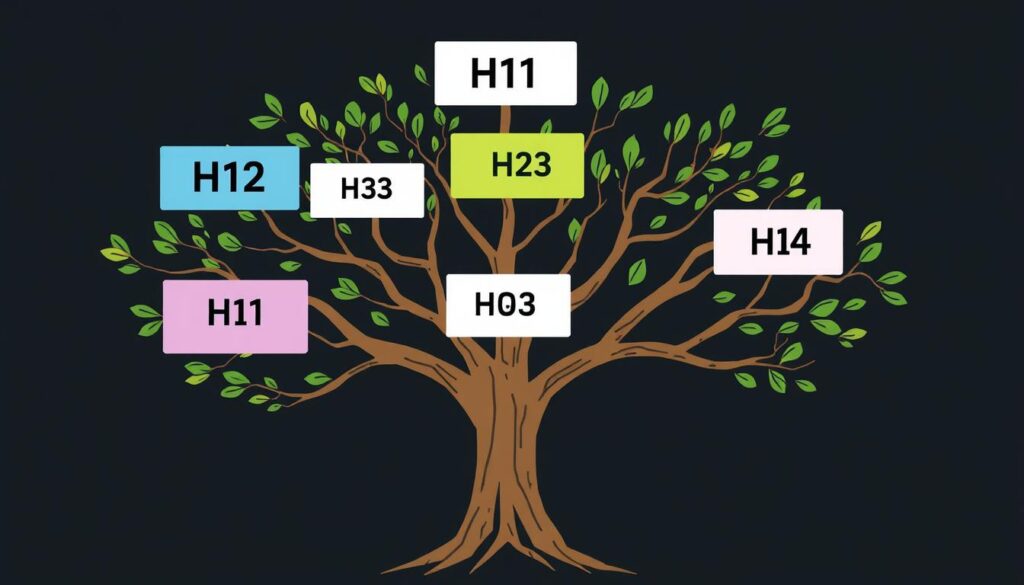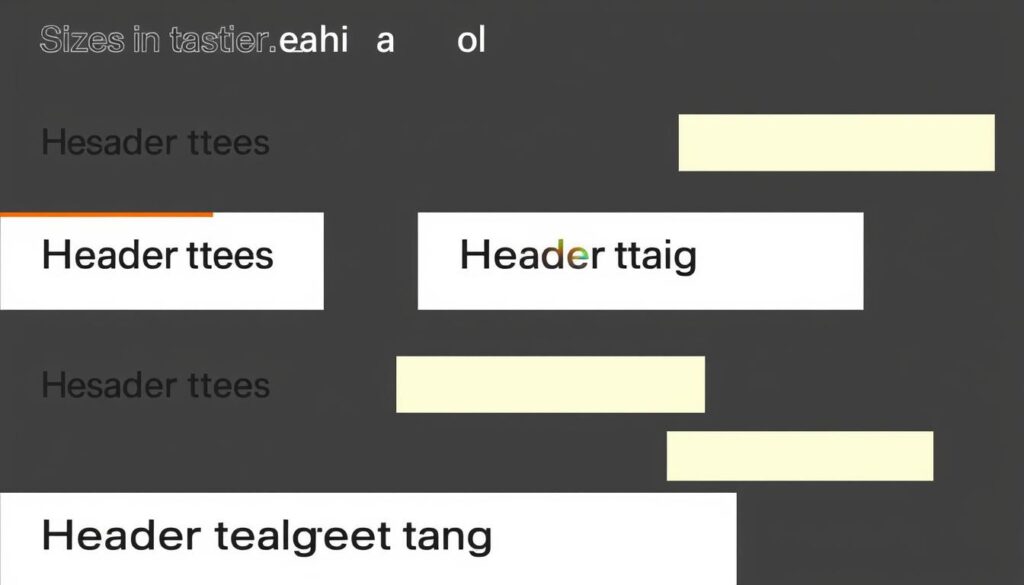Did you know HTML has six header levels? From h1 to h6, this setup is key for SEO. It not only helps visitors but also lets search engines get the content better.
Using SEO-friendly headers is key for users and search engines. A single h1 tag is suggested to show clear focus. Short, clear headers also keep users interested.
Google’s John Mueller says keywords in headers help a lot. They make it easier for search engines to know what a page is about. This is very important for getting a good spot in search results.
We will cover how to use header tags well. You’ll learn why a clear setup matters and ways to make headers better. Get ready to boost both user happiness and how visible you are to search engines.
Understanding Header Tags and Their Importance in SEO
Header tags help organize web content well. They make it easy for users and search engines to go through. Having them right is key to a top Header Tags and SEO Structure. They help manage the flow of content and make pages easy and clear to read, boosting SEO.

What Are Header Tags?
HTML gives us up to six header tags, from H1 to H6. These show the order and importance of content, with H1 being the top dog and H6 the least. Using these tags right can make a page very tidy. This makes it simple for search engines and users to get the importance of the content.
Why Header Tags Matter for SEO
Header tags are big for SEO success. Google looks at these tags to figure out what a webpage is about. It’s not just throwing in keywords. You have to put them in the right header tags. This boosts how easy it is to scan content, which helps with ranking and indexing, making your page more visible online.
User Experience Benefits of Using Header Tags
Good use of header tags doesn’t just help SEO. It makes the user’s experience better too. When your content is well-organized, it’s more enjoyable to read and interact with. This means people will stay on your page longer. Using headers well makes a webpage easy to follow. That leads to happier visitors and more interaction on your site.
Best Practices for Using Header Tags
Optimizing header tags benefits users and SEO. It makes your content easy to get and nicely organized for search engines. We will look at some key tips for using header tags well.
One H1 Tag Per Page
The H1 tag is very important. It acts as the page’s main title. John Mueller from Google says a single H1 tag shows the key topic of a page. Be sure your H1 is special and has the main keyword. This helps search engines spot the core idea of your content.

Maintaining a Logical Hierarchy (H2, H3, H4)
It’s key to have a clear header structure for SEO and easy reading. Start with an H1 tag, then use H2 tags and H3 tags as needed. This setup lets search engines grasp your content’s setup. It improves indexing and could raise your spots on search pages. Using H4 to H6 tags can sort complex details further.
- H1: Main title, one per page
- H2: Main subheadings
- H3: Subsections under H2
- H4-H6: Optional, for further sub-division
Breaking Up Text with Subheadings
Subheadings split up long text well. They make your writing easy to read and follow. Proper subheadings (like H2, H3) guide readers smoothly and boost the reading experience. Google’s Search Generative Experience also depends on this layout to understand and rank content.
Using header tag optimization techniques boosts readability and helps search engines. This means more people engaging with your content, better usability, and a higher chance at top features.
Common Mistakes to Avoid with Header Tags
Knowing the do’s and don’ts of header tag use is key for good header tag optimization techniques. Mistakes like putting in too many keywords and not keeping the format consistent can hurt both how users feel and how well you do in SEO. Here, we explore ways to dodge these errors and build a strong SEO header tag strategy.

Avoid Keyword Stuffing
Keyword stuffing is a common mistake. It happens when too many keywords are crammed into header tags. Although it might seem helpful to pack lots of keywords in, it can actually have the opposite effect. Google has ways of finding and penalizing this behavior. Instead, keep keyword use in headers to a 2-3% density. This means putting primary and longer keywords in your header tag optimization techniques wisely. It helps with SEO while keeping your content easy to read.
Consistent Formatting and Style
Keeping a uniform format and style is also vital for a SEO header tag strategy. If header tags are used inconsistently, it can puzzle both users and search engines. Each header level (H1, H2, H3, etc.) should be used in order. It’s best not to skip from an H1 directly to an H3, for example. Google’s guidelines suggest this as well. Good use of headers helps with SEO and makes content nicer for users to read.
To avoid these common missteps, make sure your header tags help both your users and your SEO efforts. Doing this will ensure a strong SEO header tag strategy.
Advanced Techniques for Keyword-Optimized Header Tags
Using advanced techniques for header tags can really boost SEO and make your content stand out. By focusing on specific queries and structuring your tags right, you can match Google’s needs for featured snippets. Make sure your H2 tags have long-tail keywords. This makes your content a top pick for snippets.

Optimizing for Featured Snippets
Getting your content into featured snippets is key with header tags. You need to craft your content to give clear, direct answers right after your H2 tags. Important points include:
- Precision: Use clear, concise responses immediately after your H2 tags.
- Relevance: Ensure that the content directly addresses common search queries.
- Structure: Organize information logically, aiding Google’s understanding of your content hierarchy.
Following these steps will help your content shine in Google’s snippets. This improves visibility and trust. In all, using smart header tag techniques is a powerful way to enhance SEO results.
Conclusion
Understanding and using header tags right is key to a great website. It’s like making a book easy to read. The H1 tag is the start, just like a book’s cover. Then, H2 to H6 tags help out, making everything clear.
Using headers smartly boosts SEO and keeps users happy. By sticking to one H1 tag and using keywords, your site gets better. This makes it easy for search engines and people to find and enjoy your content.
Header tags are vital for your site’s success. They make your site rank higher and improve user experience. Stick to header rules to make your website stand out. Clear, well-planned headers make your SEO strategy work.




